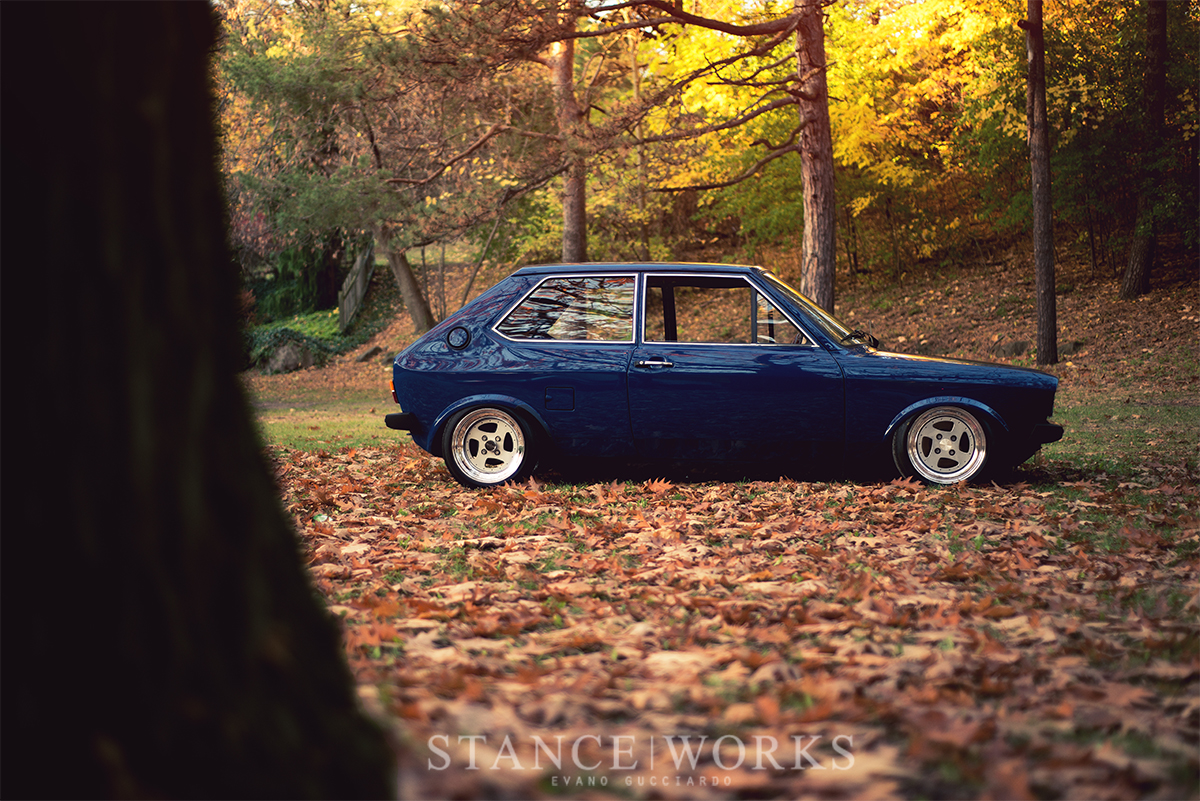Photography by Evano Gucciardo
There are a select few over-arcing “breeds” in the automotive world, each known for their nuances, good and bad. There’s the Japanese, known for their iconic turbocharged engines alongside their oddball kei-car economachines. There’s us Americans, known for an abundance of displacement paired with truly awful interiors, and often design. There are the Italians, famed for their twelve-cylinder offerings, yet plagued with costs old and new. And then there are the Germans, who’s good and bad go hand in hand: their engineering. German craftsmanship is often met with the much-too-complicated and over-engineered path less followed. Despite the disposition, the Germans rarely seem to fail at bringing something special to the table, and in 1974, Audi did just that by entering the growing “supermini” car class with the Audi 50.


The “supermini” class was informally born in the 1970s as auto manufacturers attempted to replace Austin’s famous Mini with cars better suited for the world Austin had created. The Italians had introduced the Fiat 127, and the French, known the absolute best and the absolute worst in automobiles, had brought the Renault 5 to market. Wanting to compete, Audi NSU Auto Union AG brought what was known internally as the “type 86” to the European market – the 50.


The Audi 50 was presented as a three-door hatchback with relatively few options. Low price was Audi’s goal, and thus the 50 was offered with three trim levels: standard, LS, and GL(S). The Audi 50 was fitted with a 1.1-liter engine that produced 50 horsepower in standard trip, and for those that opted up, a bump to almost 60 horsepower allowed for a little bit of pep in the featherweight’s step.
Shortly after launch, the Audi 50 was rebadged and sold as the Volkswagen Polo, and the two cars continued to sell for a number of years. However, Audi aimed to grow as a luxury brand, and their price tags reflected it. The Polo outsold the 50 significantly. While Audi had produced 180,000 units, Volkswagen had sold more than half-a-million in the same time frame. Four years after it was launched, Audi axed the 50, leaving the chassis to carry on under Volkswagen’s namesake, which it does to this day.

Such a fate leaves the Audi 50 as a bit of a wild card in the Audi line of heritage. While the car’s “spiritual successor” is the Audi A1, signified by Audi’s direct claims to return to the “supermini” market, as well as it’s pseudo-similar aesthetics and platform, the 50 still stands on its own in many ways. Moreover, the 50 was only sold to the European market, making them a rare find for the rest of the world.
It should go without saying that an Audi 50 on American soil is quite the rare find. While it might be audacious to say that this is the only one, we’ll happily urge any fellow Audi 50 owners to step forth. So how did the little blue coupe wind up 8,000 miles from home?
As the trail of ownership suggests, the car was imported after its original owner, the importer’s mother, had simply stopped driving it in Germany. After its for-sale status made waves after landing on BringATrailer.com, the car eventually wound up in the hands of our friend Brian Henderson at Rotiform Wheels. It was in relatively nice shape, all things considered, but believe it or not, this car was originally tweety-bird yellow. However, Brian moved on from the car after not much time, and from there, the car found its way to Jason Morabito- a turn of events that comes as no surprise what-so-ever for those who know the two. It was once Jason owned the car that the little Audi 50 was given the full-treatment.
It’s obvious to all but the severely colorblind that the car strays a long way from its original form – instead of the vibrant yellow, Jason had the car’s bodywork refinished and repainted to a deep, oceanic blue. The car’s brightwork was refreshed, and some removed, to simplify the overall aesthetic of the tiny hatchback.
Under the car, Air Lift struts and V2 management plunge the tiny car towards the asphalt, atop a “supermini” set of silver and polished Rotiform TMBs, which offer a stark contrast to the deep hue of the paintwork. The 50’s modest arches hunker down over a preciously small set of tires, finishing off the car’s exterior aesthetic perfectly. The Air Lift management and tank are nestled into the car’s spare tire well, surrounded by a glossy floor pan.
The interior of the car was redone in cream-colored leather, with accents painted to match. A wood grain Nardi brings a small touch of Audi’s known elegance to the car’s persona, and matches the wood trim of the dashboard. The door cards and carpet remain black, and the whole package is inarguably perfect. Under the hood, things are equally simplistic, with the car’s original lack of wires and amenities offering a “shaved” style. The clean, tiny red-top engine ticks along, propelling the hatch with spirit.
This Audi 50 is a car that doesn’t need much done, because in truth, there’s not much to it. It’s a beautifully simple car, with its subtleties and nuances improved upon in perfect ways. But for those that know Jason, as said before, it should come as no surprise that the car eventually left his hands as well, despite his serious investment and lots of hard work. The Audi 50’s journey continued, and from what is known, the car now lives in Southern California, where it was just a few years ago. It’s making the rounds – and while it’s normally sad to see a car go from home to home, this one seems like a special case. Here’s to the latest owner, and those in the future who will hopefully continue to write a beautiful story for a beautiful car.




















